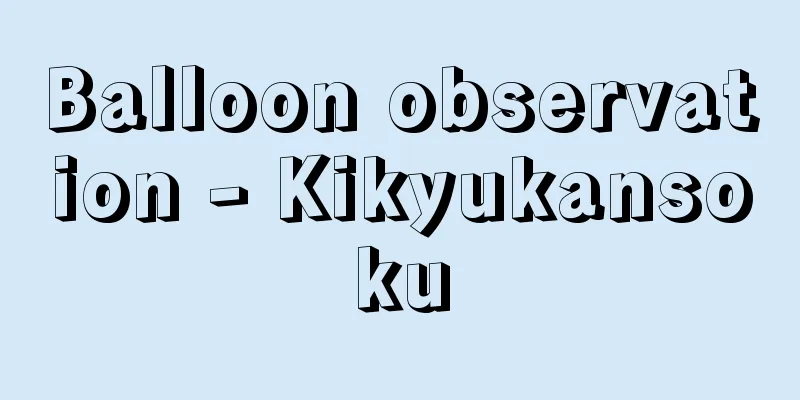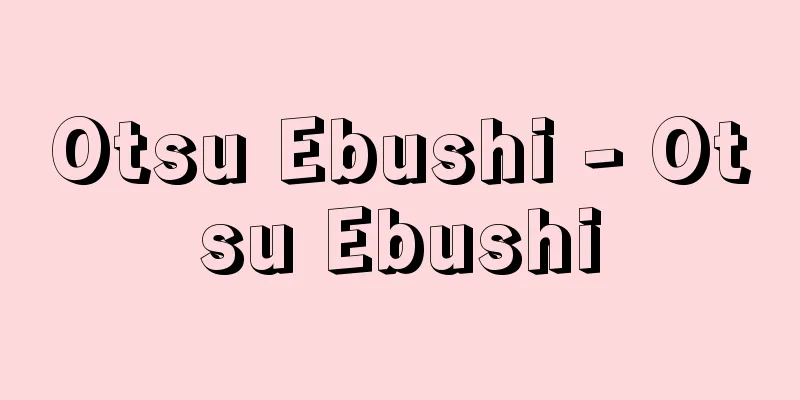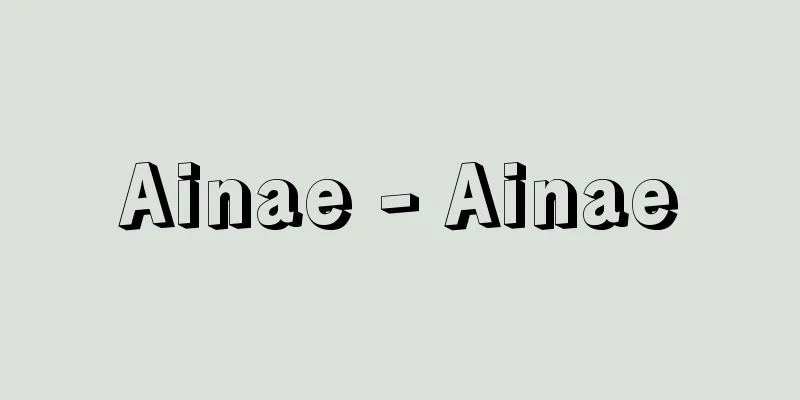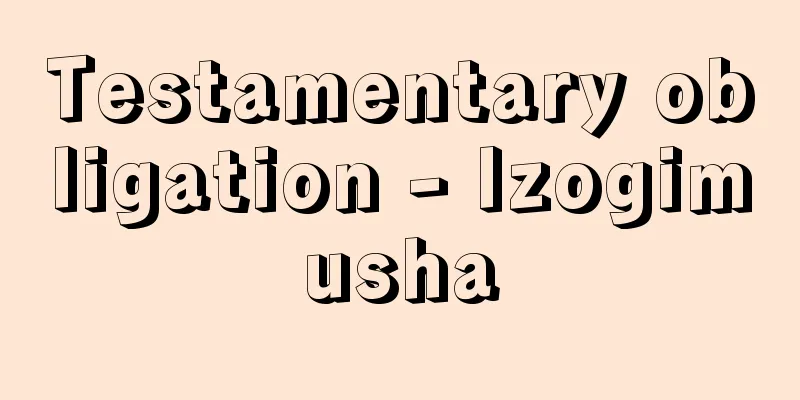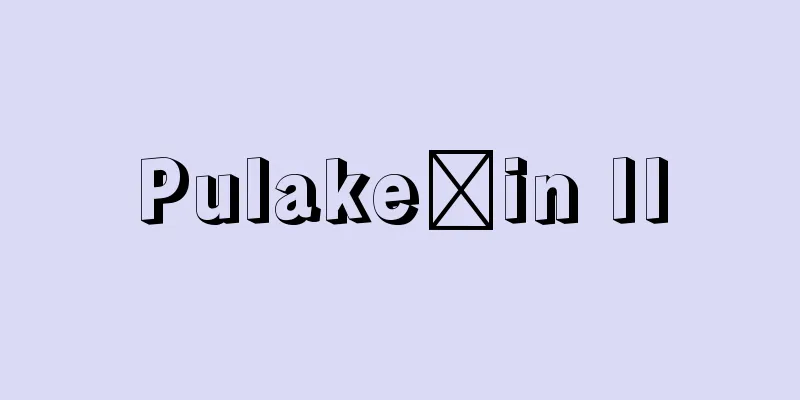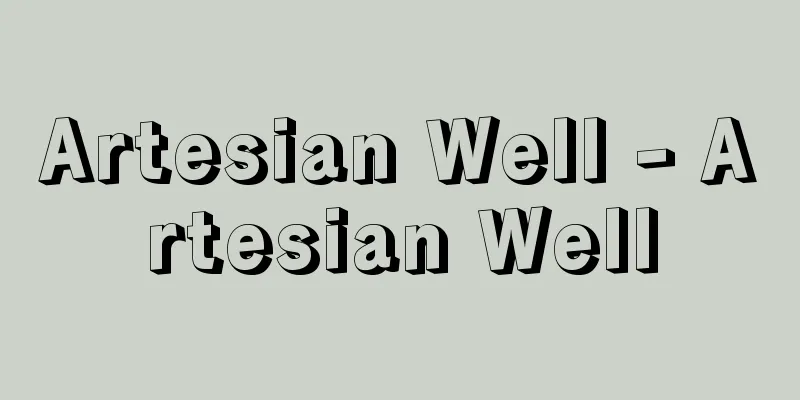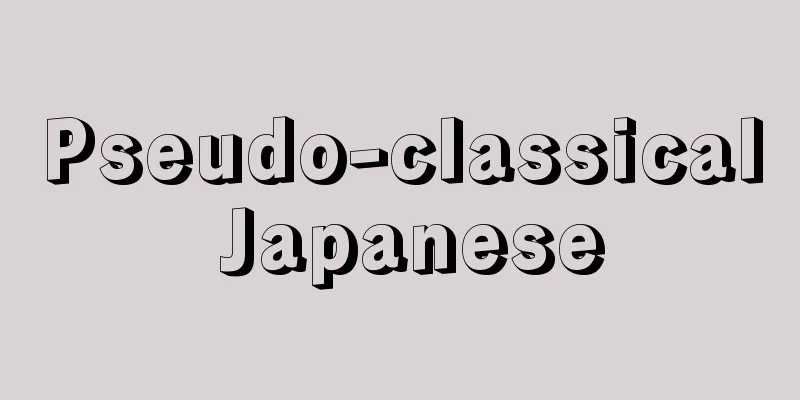Academic achievement test - gakuryoku kuestu
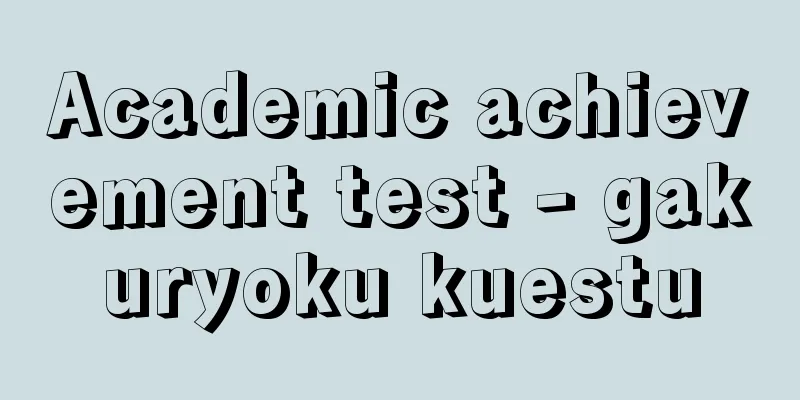
|
A general term for tests that measure and evaluate the knowledge and abilities acquired as a result of a certain amount of learning. Same as academic achievement tests. [Iroku Kawai] historyUntil the end of the 19th century, optional oral examinations and essay tests were mainly used, but soon their subjectivity came to be reflected upon and criticized. In the 20th century, the educational measurement movement centered around Thorndike became popular in the United States, and various standard academic achievement tests on writing, spelling, arithmetic, etc. were prototyped with the aim of measuring the results of learning objectively and quantitatively. Amidst fierce debate between the pros and cons, standard academic achievement tests gradually became widespread. In Japan, from the 1920s to the early Showa period, many objective tests on arithmetic, reading, etc. were created. On the other hand, apart from standard tests created by experts, teachers also created their own objective tests for their own classes. After that, around 1930 (Showa 5), criticism and reflection arose that the results of education should also be considered from the perspective of educational goals and values, and that the educational measurement movement tended to ignore aspects of education that are difficult to quantify, and academic achievement tests came to be positioned as one method from the perspective of educational evaluation. Objective tests went unnoticed during World War II, but after the war, they began to be used frequently again under the influence of the United States. Standardized tests (commercial tests) by private companies were used for a long time as materials for career guidance in junior high schools, but this was often criticized as a factor in the entrance exam competition that placed too much emphasis on deviation scores, and was banned by the Ministry of Education at the time in 1993. However, large-scale academic ability tests at cram schools and other institutions have continued to be widely used since then. [Iroku Kawai] kindsAcademic achievement tests are divided into (1) standardized objective tests, (2) teacher-created objective tests, and (3) traditional essay-type tests. Standardized tests (1) are administered to a sample group of students selected in advance to represent all children and students in the country, and individuals are evaluated against standards created based on the results of the tests. This has the advantage of allowing an academic achievement standard deviation to be calculated immediately. They are also called achievement tests. In contrast, teacher-created tests (2) do not have such standards, making it difficult to compare with the national average or with other classes or schools. The validity and reliability of the tests themselves are also questionable. However, they can directly evaluate the effectiveness of lessons in classes that teachers have directly taught, and can be used to reflect on and improve teaching methods. Standardized tests and teacher-created tests are both objective tests, which have the advantages of preventing subjectivity from entering into the grading process and allowing many questions to be asked over a wide range of subjects, but they also have the disadvantage of being prone to testing fragmented and superficial knowledge. To make up for this, the significance of essay tests (3) has been reconsidered. However, it is important to pay special attention to the fact that essay tests are difficult to set a large number of questions on, limiting the scope of questions, and that grading can easily become subjective due to the halo effect. Based on their purpose, academic achievement tests can be divided into three types: (1) overview tests, which evaluate overall academic ability or general academic ability in a particular subject; (2) analytical tests, which evaluate academic ability in a single subject by area or perspective and present the results in a profile; and (3) diagnostic tests, which identify areas of weakness and are of direct use in instruction. [Iroku Kawai] Question formatAcademic achievement tests are broadly divided into true/false and written format. True/false format, as typified by multiple choice (choosing the correct answer from among several options), asks the testee to confirm the correct answer from among items presented in advance. Therefore, even if the testee does not have sufficient knowledge, the correct answer may come out of chance. On the other hand, written format, as typified by completion method (remembering and filling in the blanks in a sentence with the appropriate word or number), asks the testee to recall the correct answer from memorized knowledge. Correct understanding and accurate memory are required to get the correct answer in written format, and written format is generally more difficult than true/false format. The aforementioned essay test is included in the written format due to its nature. True/false format is often used in selection tests where a large amount of data must be processed in a short period of time because it allows for efficient grading, but it is not a very suitable format for everyday educational situations. [Iroku Kawai] "The Latest Educational Evaluation Methods Complete Book 2: Learning Instruction and Education/Psychological Testing" edited by Hashimoto Shigeharu and Hidano Tadashi (1977, Tosho Bunka)" ▽ "Practical Educational Psychology 5: The Psychology of Measurement and Evaluation" edited by Tatsuno Chizu, Takano Seishun, Kato Takakatsu, and Fukuzawa Shusuke (1981, Kyoiku Shuppan)" ▽ "Educational Information Science Research Group, Lecture Series on Educational Information Science 3: Education and Data Analysis" (1988, Daiichi Hoki Shuppan)" ▽ "The Science of Testing" by Ikeda Hiroshi (1992, Nihon Bunka Kagakusha)" ▽ "Can We Stop Using 'Commercial Tests'? How Long Will the Exam Hell Continue" by Matsumoto Yukio (1993, Minshusha)" ▽ "The Psychology of Testing" by Ohnogi Hiroaki (1994, Nakanishiya Shuppan)" ▽ "The Collected Works of Fujita Eiji 2: Educational Measurement and Practical Research" by Fujita Eiji (1995, Kaneko Shobo)" ▽ "In Search of a New Evaluation: The End of Test-Based Education" by Caroline V. Gipps, translated by Hideyuki Suzuki (2001, Ronsosha)" ▽ "Can Language Ability Be Measured by Tests? An Introduction to Language Test Data Analysis" by Yoichi Nakamura, supervised by Kenji Otomo (2002, Kirihara Shoten)" [Reference items] | | | | |Source: Shogakukan Encyclopedia Nipponica About Encyclopedia Nipponica Information | Legend |
|
一定の学習の成果として獲得された知識や能力を、測定・評価するテストの総称である。学力検査に同じ。 [河合伊六] 歴史19世紀末ごろまでは、任意の口頭試問や論文体テストがおもに用いられていたが、やがてその主観性が反省、批判されるようになった。20世紀に入ると、アメリカでソーンダイクを中心とする教育測定運動が盛んになり、学習の成果を客観的、数量的に測定することを目的として、書字、綴字(つづりじ)、算数などに関する各種の標準学力テストが試作された。そして賛否両論の激しい論争のなかで標準学力テストはしだいに広く普及していった。日本でも、大正10年代から昭和初期にかけて、当時の算術や読み方などに関する客観テストが数多く作成された。他方、専門家の手になる標準テストとは別に、教師が自己の担当学級に適用するための客観テストも自作された。その後1930年(昭和5)ころから、教育の成果は教育目的や価値の観点からも検討されるべきであること、そして、教育測定運動では、数量化しにくい面の教育が等閑視されやすいことなどの批判と反省が生まれ、学力テストは、教育評価の観点からその一つの方法として位置づけられるようになった。 第二次世界大戦中は影を潜めていた客観テストは、戦後アメリカの影響を受けてふたたび多用されるようになる。そして中学校での進路指導の資料としてその後も長く民間業者による統一テスト(業者テスト)が利用されてきたが、これは偏差値偏重の受験競争の要因としてたびたび問題となり、1993年(平成5)当時の文部省により禁止されるに至った。しかしその後も学習塾などの大規模な学力テストは広く行われている。 [河合伊六] 種類学力テストは、(1)標準化された客観テスト、(2)教師作成の客観テスト、(3)従来からの論文体テスト、に分けられる。(1)の標準テストは、あらかじめ全国の児童・生徒を代表するように抽出された見本集団にテストを実施し、その結果に基づいて作成した基準に照らして個人を評価するもので、学力偏差値もすぐに求められる利点をもっている。アチーブメント・テストachievement testともいう。これに対して(2)の教師作成テストは、そのような基準をもっていないので、全国平均もしくは他の学級や学校との比較が困難である。また、テスト自体の妥当性や信頼性にも難がある。しかし、教師が直接指導した学級での授業効果を直接に評価できるので、指導方法の反省と改善に役だてることができる。標準テストと教師作成テストはともに客観テストであり、採点に主観が入り込むことを防げるし、広範囲にわたって多くの問題を出題できる利点をもつが、断片的で皮相的な知識のテストに陥りやすい欠点ももっている。この点を補うものとして、(3)の論文体テストの意義がふたたび見直されるようになった。しかし、論文体テストは多数の問題の出題が困難であるために出題範囲が限定されるとか、後光効果などのために採点が主観的になりやすいとかの点に、とくに留意しなければならない。 学力テストはまた、その目的からみて、(1)総合的な学力や特定教科の全般的な学力を評価する概観テスト、(2)一つの教科の学力を領域別もしくは観点別に評価し、その結果をプロフィールで示す分析テスト、(3)つまずきの箇所を発見し、指導に直接役だてようとする診断テスト、の3種に分けられる。 [河合伊六] 出題形式学力テストの出題形式は、○×式と記述式とに大別される。○×式は、多肢選択法multiple-choice(いくつかの項目のなかから正解を選ぶ)に代表されるように、あらかじめ提示された項目のなかから正解の再認を求める形式である。そのために、十分な知識がなくても、偶然が正答となることもある。他方、記述式は、完成法(文章中の空欄に適切な語句や数字を思い出して記入する)で代表されるように、記憶している知識のなかから正解を再生させる形式である。記述式で正解するには正しい理解と正確な記憶が必要であり、一般に○×式より記述式のほうがむずかしい。なお、前述の論文体テストは、その性質上、記述式のなかに含められる。○×式は採点が能率的にできるので、多数のデータを短期間に処理しなければならない選抜試験などで多く用いられているが、日常の教育場面ではあまり適当な形式とはいえない。 [河合伊六] 『橋本重治・肥田野直監修『最新教育評価法全書2 学習指導と教育・心理検査』(1977・図書文化)』▽『辰野千寿・高野清純・加藤隆勝・福沢周亮編『実践教育心理学5 測定と評価の心理』(1981・教育出版)』▽『教育情報科学研究会編『講座教育情報科学3 教育とデータ分析』(1988・第一法規出版)』▽『池田央著『テストの科学』(1992・日本文化科学社)』▽『松本幸夫著『「業者テスト」はやめられるか――いつまでつづく受験地獄』(1993・民衆社)』▽『大野木裕明著『テストの心理学』(1994・ナカニシヤ出版)』▽『藤田恵璽著『藤田恵璽著作集2 教育測定と実践研究』(1995・金子書房)』▽『キャロライン・V・ギップス著、鈴木秀幸訳『新しい評価を求めて――テスト教育の終焉』(2001・論創社)』▽『大友賢二監修、中村洋一著『テストで言語能力は測れるか――言語テストデータ分析入門』(2002・桐原書店)』 [参照項目] | | | | |出典 小学館 日本大百科全書(ニッポニカ)日本大百科全書(ニッポニカ)について 情報 | 凡例 |
Recommend
Environmental art (English spelling)
This refers to artistic works or expressive activ...
Leafy order - Enyo-moku
...When this final developmental form is ingested...
Freesia
...A semi-cold-hardy corm plant (illustration) of...
Nguyen Coan - Nguyen Coan
... Shortly after the death of Ngo Quyen, local l...
Kidd, W.
…British pirate. His real name was William Kidd. ...
Sulfa drugs - Sulfazai
Product Name <Salazosulfapyridine preparations&...
Kama, S.
… [Ken Akasaka] [history] The original indigenous...
Home education - home education
It means the education of children at home by par...
Library of Congress Classification
...Of the approximately 130,000 classification it...
Tojiro Hirano
Year of death: June 10, 1638 (July 21, 1638) Year ...
Caste, DW - Caste
...An electron (β particle) accelerator put into ...
Kara Mustafa Paşa (English spelling) Kara Mustafa Paşa
...Mehmed Pasha, the first, probably entered the ...
Scyllarides haani (English spelling) Scyllaridesshaani
… [Takeda Masatomo]. … *Some of the terminology t...
Sensory evaluation
Judging the quality of a product by human senses ...
Meister
〘Noun〙 (Meister) ① Expert. Master. Great master. M...
